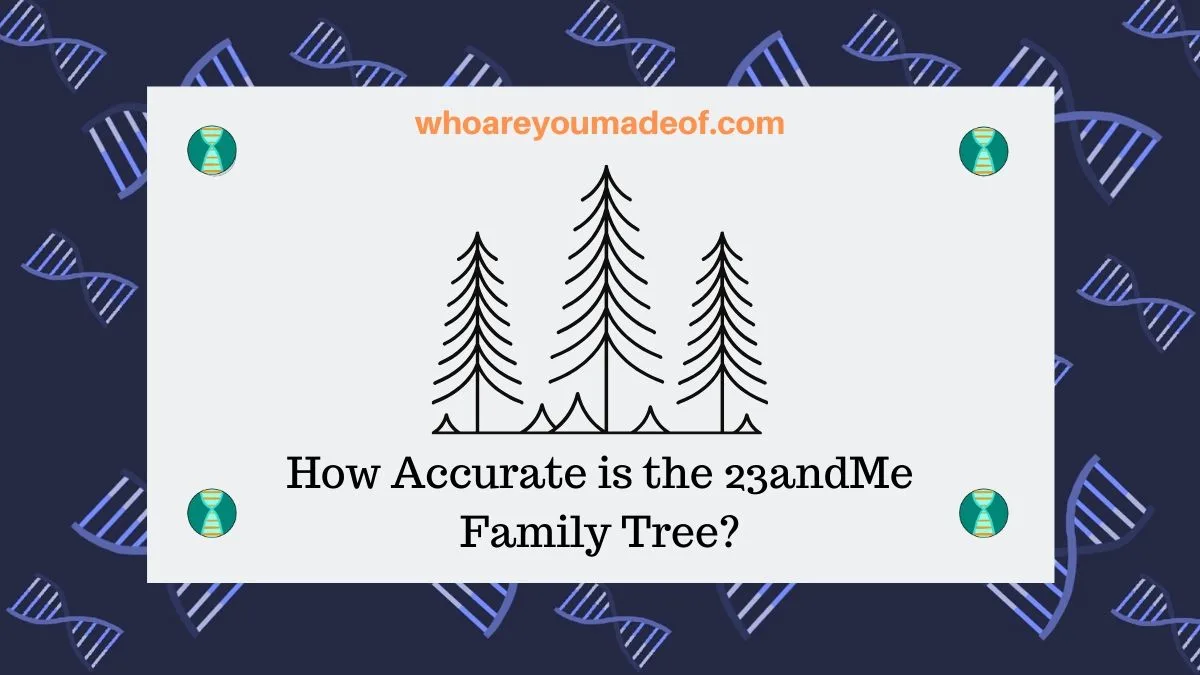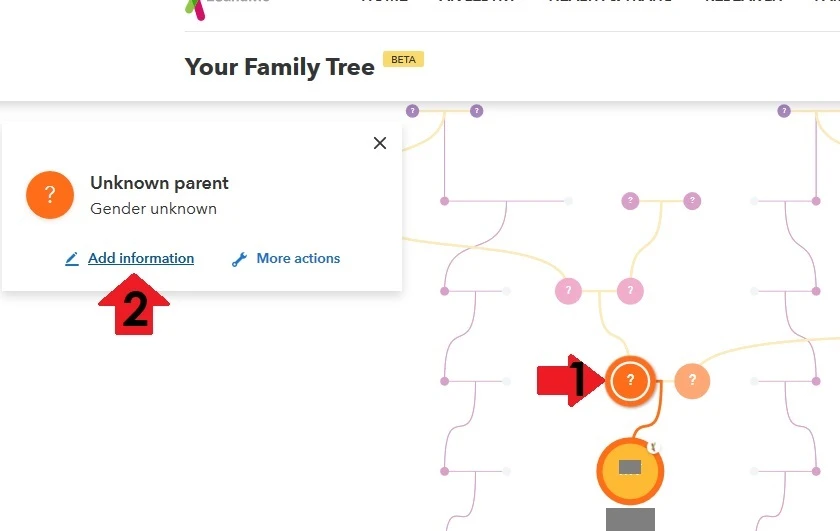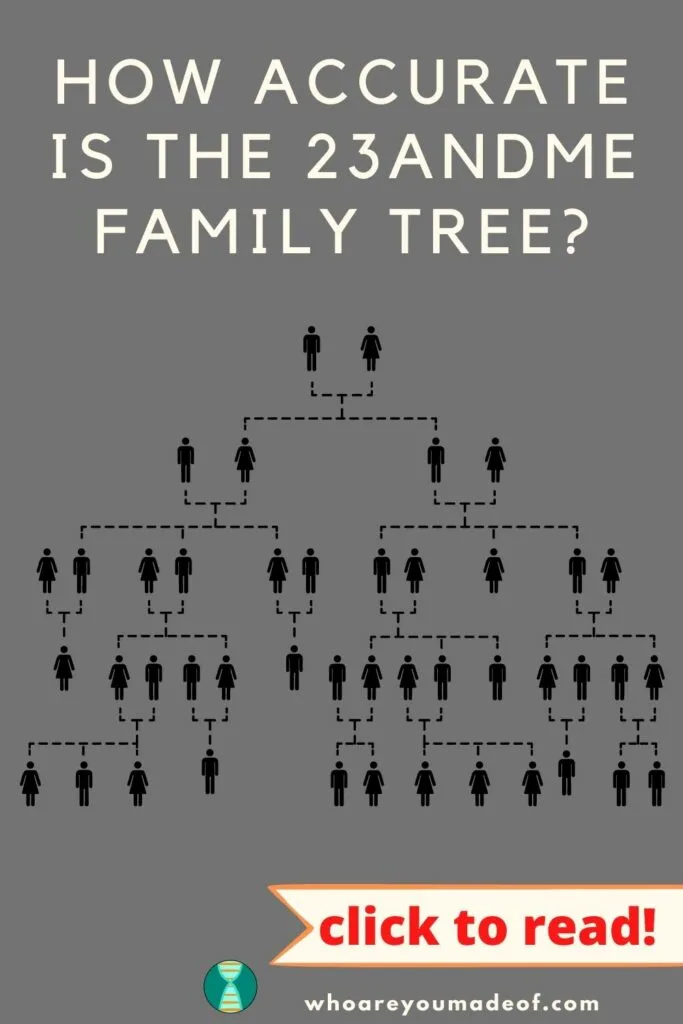23andMe results come with access to lots of great tools. In this post, learn how accurate the 23andMe Family Tree tool is, and how to help make it more accurate.
Understanding the accuracy of this feature and how to work with it to make it give you better information is key to learning as much as you can from your 23andMe DNA results.

Is the 23andMe Family Tree feature accurate?
The 23andMe Family Tree is a relatively accurate, helpful estimate of where your DNA matches may belong in your family tree. It can be a useful way to learn how you might be related to your DNA matches.
I have personally found this tool to be accurate and useful in my own research. In fact, I was able to use the results of this tool to identify my great-great grandfather's German parents.
Factors that can affect the perceived accuracy of the estimate can include:
- Half-relatives share half as much DNA with us, meaning they might show up a generation or more further removed than they really are
- Your DNA matches might be related to you or any of your other DNA matches in more than one way, causing confusion (endogamy)
- Whether or not the person using the tool input their family tree correctly and understands how to use the features of the tool
To learn more about how to understand the accuracy of the feature, we need to learn more about what it does and how it works.
Note: It's important to build a family tree, even to use the 23andMe DNA feature. I recommend Ancestry, which is where I always build my main trees.
What is the main function of the 23andMe Family Tree feature?
The Family Tree feature places your DNA matches into a virtual family tree based on your genetic connection with your DNA Relatives and their likely relationship with each other.
When you first access the Family Tree tool on 23andMe, you will see that it needs to take a few minutes to "populate" your family tree.

The family tree that we see when we access the tool is 23andMe's "best estimate" of how we and some of our DNA matches are related to each other.
It's up to us to help 23andMe understand what we know about our family tree and how those DNA matches truly are related to each other. When we add our human touch (and knowledge!) to the tool, we can see even more accuracy.
How to make the 23andMe Family Tree more accurate
To be sure that we are seeing the best possible information on our Family Tree, we should be sure to take the time to set up the tool as best as we can. Entering in parents, grandparents, great-grandparents, and great-great grandparents, if possible, is an important first step.
If you haven't yet started building a family tree, definitely check out my book which is a guide to family tree building basics.
If you already have DNA matches on your family tree, you should make sure that you add your parents to the correct side of your tree.

For example, if you see Cousin Jim on your tree and you know that Jim is related to you through your dad's side of the family, be sure to put your dad on the side of your tree that has paths that lead to Jim.
Complete the same steps for your grandparents and great-grandparents, and further back, if possible.
It might be necessary to do a little research on some of your DNA matches that show up in the tool in order to see how they really are related to you (see this checklist for ideas about how to do it).
Once you know how some of your DNA matches are connected and you have identified your most recent common ancestor, you can place your ancestor in the correct spot on your tree.
Every once in a while, you might find that all of your ancestors are off your tree. This happens when you have new DNA matches on your tree and 23andMe wants to make sure that everyone is where they belong.
Taking the time to re-place your ancestors in their respective spots on the tree will help your tool work even better.
Why aren't all of our DNA Relatives on our Family Tree on 23andMe?
As the 23andMe software is able to come to conclusions about how more of your DNA matches are related to you, they should appear on your list.
Every once in a while, as new people are added, you might have to reassign your ancestors to the correct spots in your family tree. While this seems repetitive, it's actually very useful.
Every time we do it, we are "teaching" the 23andMe algorithm more about our family tree and improving the results of the tool.
It's also important to note that only DNA Relatives that have chosen to participate in DNA matching have the possibility of showing up on our 23andMe Family Tree. If you were expecting to see someone, and you don't see them, this could be the reason why.

Conclusion
I hope that this post has helped you understand more about the Family Tree feature on 23andMe, how to judge its accuracy, and how to make it even more accurate.
If you have any questions about something that you read in this post, please feel free to ask in the discussion below.
Thanks for stopping by today!

